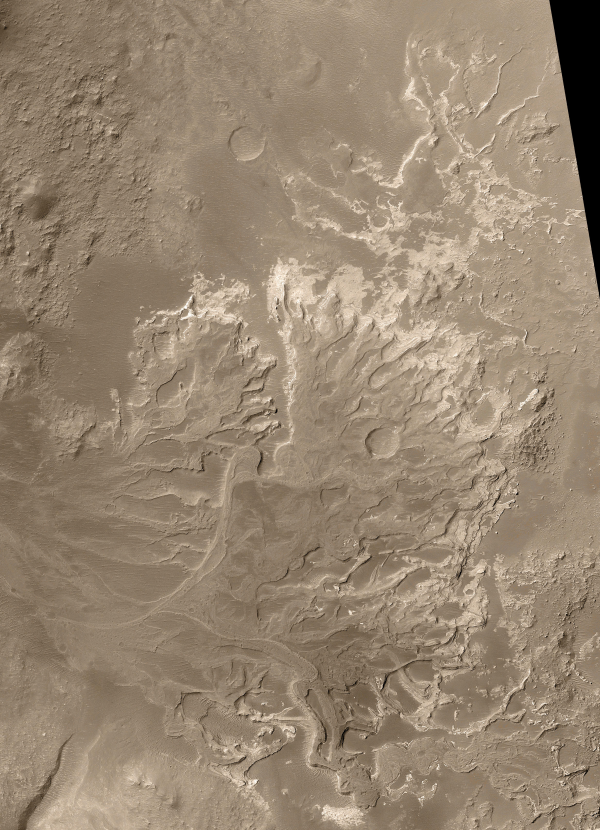|
The Enigmas on Mars 02 |
|||||
|
The Evidence for Water On Mars Part One: The Dry River Canyon .
Mars
Rovers
Probing Water History at Two Sites - October 07,
2004
Mars Rovers Spot Water-Clue Mineral, Frost, Clouds - December 13, 2004 Scientists have identified a water-signature mineral called goethite in bedrock that the NASA's Mars rover Spirit examined in the "Columbia Hills," one of the mission's surest indicators yet for a wet history on Spirit's side of Mars. "Goethite, like the jarosite that Opportunity found on the other side of Mars, is strong evidence for water activity," said Dr. Goestar Klingelhoefer of the University of Mainz, Germany, lead scientist for the iron-mineral analyzer on each rover, the Mössbauer spectrometer. Goethite forms only in the presence of water, whether in liquid, ice or gaseous form. Hematite, a mineral that had previously been identified in Columbia Hills bedrock, usually, but not always, forms in the presence of water. |
|||||
|
Salty Soil Mars Rovers Break Driving Records, Examine Salty Soil - March 02, 2005 Spirit, meanwhile, has uncovered soil that
is more than half salt, adding to the evidence for
Mars' wet past.
The golf-cart-size robots successfully completed their
three-month primary
missions in April 2004 and are continuing extended
mission operations.
Salty Expression (False Color) - January 20,-2006 Spirit uncovered several types of materials distinctive in their color, physical properties and chemistry as a result of accidentally digging a trench 30 centimeters (11.8 inches) wide during a turn at the end of a drive. The white material in this image is brighter than any seen previously by the rover. It has a powdery and cloddy texture and exhibits a high abundance of salts. The materials appear similar in some ways to bright soil deposits seen back at the "Paso Robles" site that Spirit encountered on the rover's Martian day, or sol, 431 (March 20, 2005) while climbing the northern flank of "Husband Hill." Spirit analyzed the bright, yellowish exposures in
the lower left
part of the frame using instruments on the rover's
robotic arm. Scientists
hypothesized and then confirmed that these materials
have a salty chemistry
dominated by iron-bearing sulfates. These salts may
record the past presence
of water, as they are most easily mobilized and
concentrated in liquid
solution. Spirit also examined the unusual, pitted
rock about 10 centimeters
(4 inches) wide in the lower center of the frame.
Scientists continue to
study the origin of these rocks and soils and the role
that water has played
in their formation.
Bright Soil Near 'McCool': Salty Deja Vu? - March 23, 2006 While driving eastward toward the northwestern flank of "McCool Hill," the wheels of NASA's Mars Exploration Rover Spirit churned up the largest amount of bright soil discovered so far in the mission. This image from Spirit's navigation camera, taken on the rover's 787th Martian day, or sol, of exploration (March 21, 2006), shows the strikingly light tone and large extent of the deposit. These discoveries indicate that light-toned soil deposits might be widely distributed on the flanks and valley floors of the "Columbia Hills" region in Gusev Crater on Mars. The salts may record the past presence of water, as they are easily mobilized and concentrated in liquid solution.
|
|||||
|
More Salt .
The image above is a composite of the following color images from: Spirit Rover Sol 788 2P196320343RADAQAEP2396L257C1.JPG
|
|||||
|
Mars Was a Water World
White or Wet Mars Neil Coleman has studied some of the most dramatic and significant scenery on Mars: the enormous outflow channels of Chryse Planitia. Chryse Planitia may once have been an ocean. Today it is a huge plain where many of Mars´ largest outflow channels converge. It was also Viking 1´s landing site in 1976. But what caused the outflow channels? Many scientists say obviously running water, but in recent years a few researchers have questioned this, arguing that liquid carbon dioxide might be responsible.The White Mars hypothesis contends that gaseous or liquid carbon dioxide carried debris down Martian slopes and eroded the features some attribute to fluvial processes. Advocates of the theory say it solves many problems with the water model, such as where the water came from and where it went. Neil Coleman´s work, published in the Journal of Geophysical Research, is, he believes, conclusive evidence that water, not carbon dioxide, is responsible for the features seen on the planet´s surface. Water, Water, Everywhere Dr Coleman says his latest study shows that nowhere is the evidence for vast quantities of running water clearer than the outflow channels of Chryse Planitia. Consider the associated Kasei Valles. He suggests it is a system of intertwined flood-carved channels more than 2,000 kilometres long that begins in near the equator in Echus Chasma and ends in Chryse Planitia. He says the White Mars theory is "inconsistent with studies of terrestrial and Martian mass movements" because, "put simply, rocks can ´float´ on air, but not for long". This means that only water had the stamina to carve large-scale Martian features like Kasei Valles. Advocate of the White Mars idea, Nick Hoffman of Australia´s La Trobe University, says that Coleman´s work is interesting but that he does not feel the White Mars idea is mortally wounded by it. Oceans Under Ice Another factor in favour of the water hypothesis is the discovery of reservoirs of water ice beneath the surface at Martian mid-latitudes and the fact that outflow channels on Mars are related to the planet´s volcanic activity in the past. This latest research indicates the outflow channels may have been carved by lakes of water trapped under ice that burst through crater walls and flowed downhill in torrents. Only a liquid like water, says Dr Coleman, could have slowly accumulated under ice cover, and ultimately filled a basin until it overflowed. Water-carved channels are good for the prospect for life on Mars hanging on at the present having been formed in the Martian oceans of three billion years ago. Neil Coleman says: "In reviewing the White Mars hypothesis, we find even more evidence of water than expected, which bodes well for the search for life on Mars." |
|||||
|
Distributory Fan Near Holden Crater PIA04869 .
November 13, 2003 Details in a fan-shaped deposit discovered by NASA's Mars Global Surveyor orbiter provide evidence that some ancient rivers on Mars flowed for a long time, not just in brief, intense floods. The apron of debris filling the middle of this picture from the spacecraft's Mars Orbiter Camera is a hardened and eroded distributory fan, a type of geological feature that includes river deltas and alluvial fans. Sediments transported through valleys by water on early Mars formed the 13-kilometer-long (8-mile) deposit in the distant past, when it was still possible for liquid water to flow across the martian surface. Mars Orbiter Camera team members published discovery of this feature in the online edition of the journal Science. What is important about it? First, it provides unequivocal evidence that some valleys on Mars experienced persistent flow over considerable periods of time, as rivers do on Earth. Second, because the fan is today a deposit of sedimentary rock, it demonstrates that some sedimentary rocks on Mars were deposited in a liquid environment. Third, the fan's general shape, the pattern of its channels, and its low slopes provide circumstantial evidence that the feature was an actual delta -- that is, a deposit made when a river or stream enters a body of water. If so, this landform is a strong indicator that some craters and basins on Mars once held lakes. Hundreds of other locations on Mars where valleys enter craters and basins have been imaged by the Mars Orbiter Camera, but none has shown landforms like those presented here. SOURCE and more info on this feature... A high-resolution TIFF file of this image is available HERE |
|||||
| FAIR USE NOTICE: This page contains copyrighted material the use of which has not been specifically authorized by the copyright owner. Pegasus Research Consortium distributes this material without profit to those who have expressed a prior interest in receiving the included information for research and educational purposes. We believe this constitutes a fair use of any such copyrighted material as provided for in 17 U.S.C § 107. If you wish to use copyrighted material from this site for purposes of your own that go beyond fair use, you must obtain permission from the copyright owner. | |||||
|
|
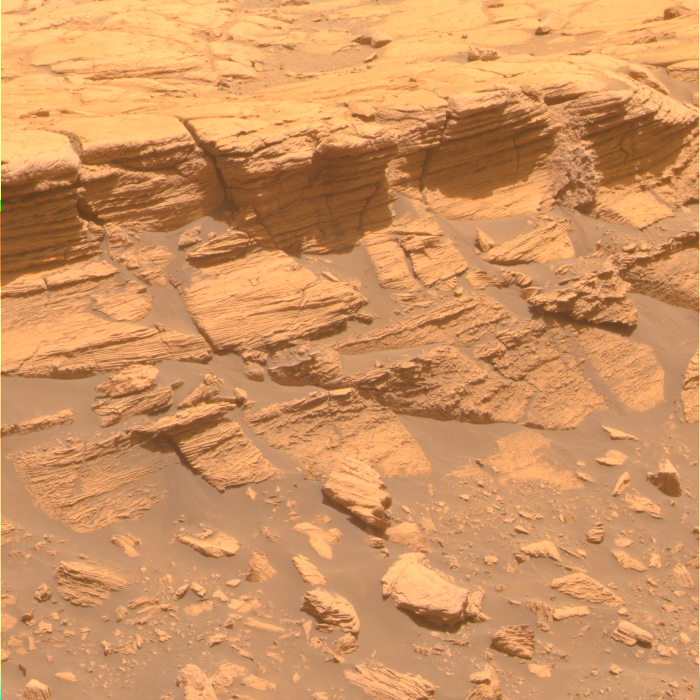
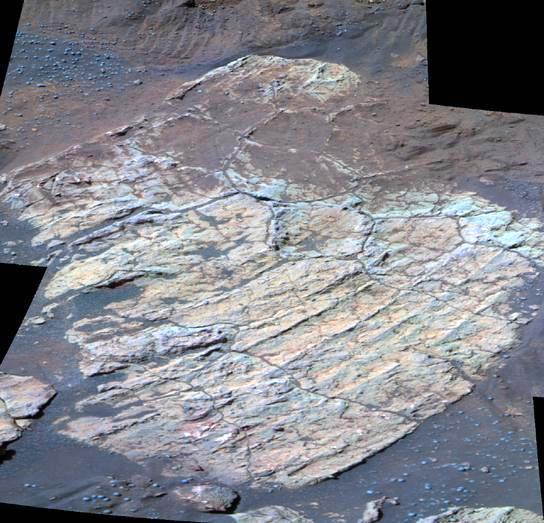

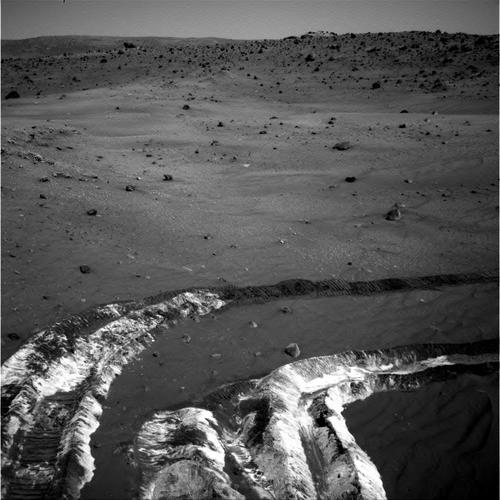
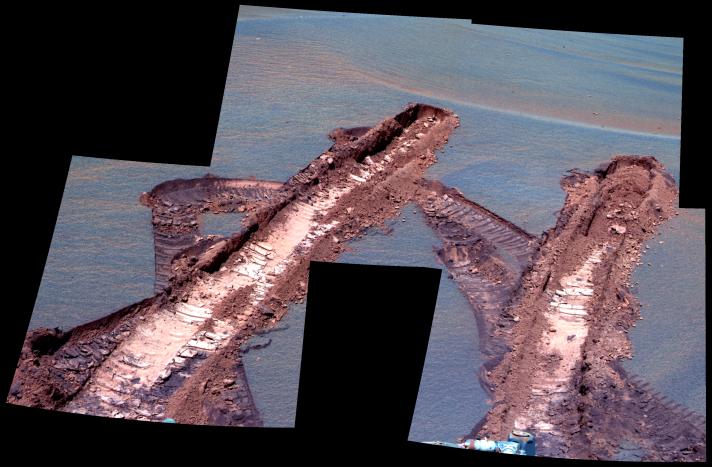
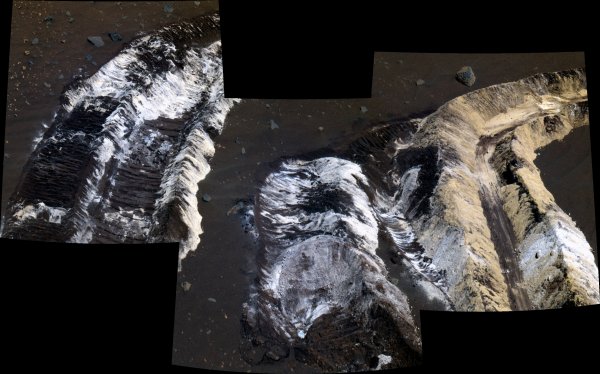
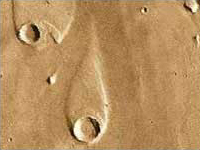 Liquid
water, not anything else, carved the canyons,
valleys and outflow plains
of Mars, according to the latest research. A
rival theory, that liquid
carbon dioxide or rocks supported by CO2 gas could
have made the surface
features, does not work, according to Dr Neil
Coleman, of the US Nuclear
Regulatory Commission. It could put an end to the
"White Mars" hypothesis,
which favoured CO2 and made the prospect for life on
Mars more remote.
Vast lakes of water accumulating under sheets of ice
until they overflowed
crater and canyon walls is the way many Martian
features formed, says Dr
Coleman.
Liquid
water, not anything else, carved the canyons,
valleys and outflow plains
of Mars, according to the latest research. A
rival theory, that liquid
carbon dioxide or rocks supported by CO2 gas could
have made the surface
features, does not work, according to Dr Neil
Coleman, of the US Nuclear
Regulatory Commission. It could put an end to the
"White Mars" hypothesis,
which favoured CO2 and made the prospect for life on
Mars more remote.
Vast lakes of water accumulating under sheets of ice
until they overflowed
crater and canyon walls is the way many Martian
features formed, says Dr
Coleman.
